In pictures: Wales' castles celebrated at National Museum Cardiff
- Published
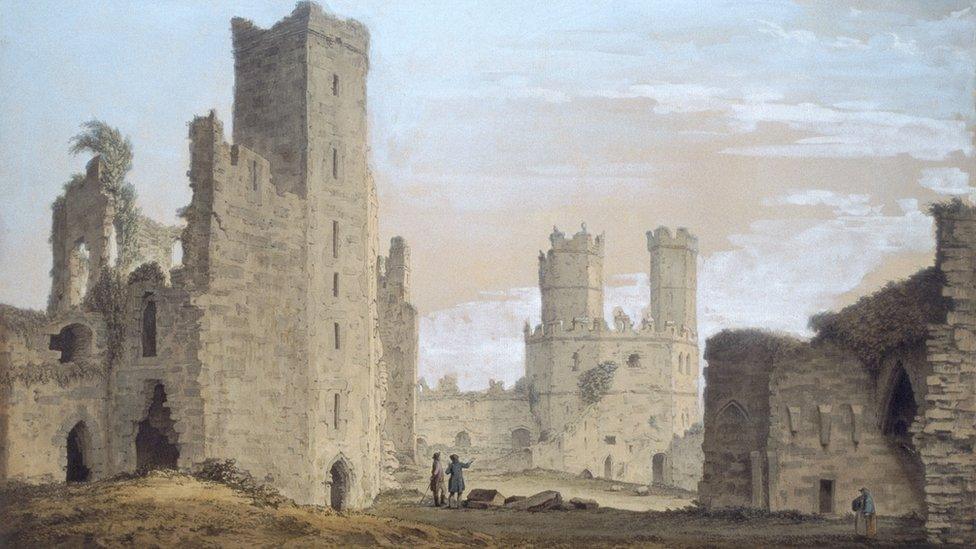
Wales' magnificent castles are celebrated in an exhibition of watercolours, drawings and prints at National Museum Cardiff. It includes this watercolour, called Caernarvon Castle, [now Caernarfon] dating to 1777, by Samuel Hieronymus Grimm (1733-1794).
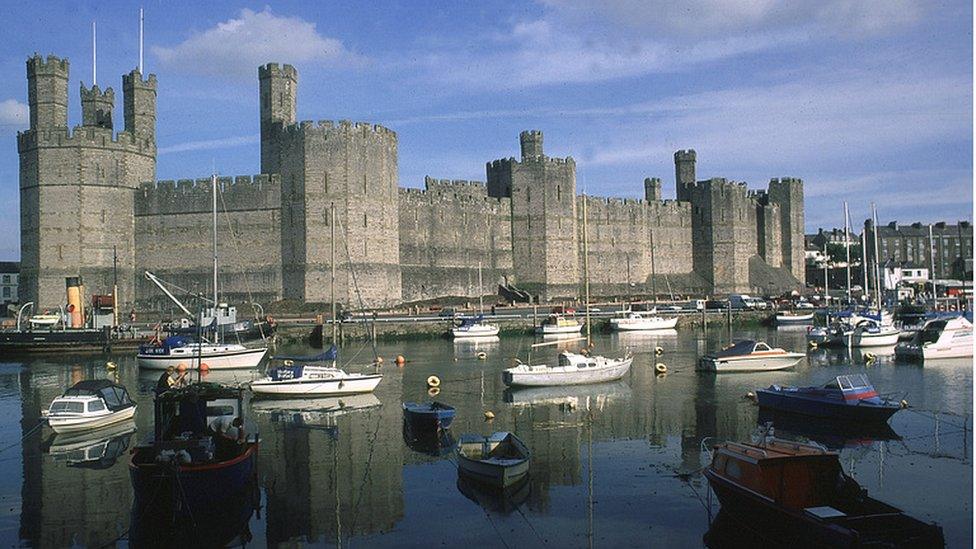
Work started on Caernarfon Castle after Edward I conquered Wales in 1277 and set about fortifying the rebellious area of north Wales. The fortress has since become the site of the investitures of the Prince of Wales, with the future Edward VIII invested in 1911 and the current prince in 1969.
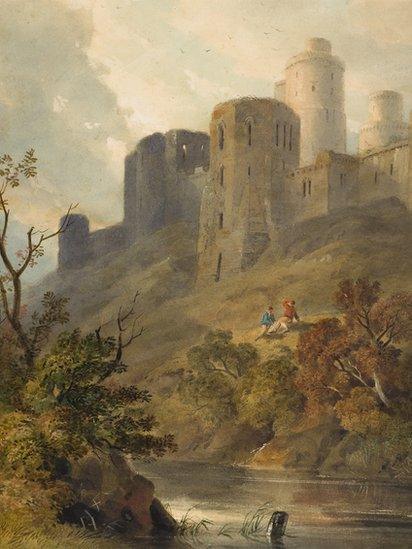
Kidwelly Castle is also featured in the museum's exhibition, which features work from the 1670s to the 1860s by artists such as Henry Gastineau, Paul Sandby, Thomas Girtin and Richard Wilson. This painting of Kidwelly Castle is by Hugh Grecian Williams.
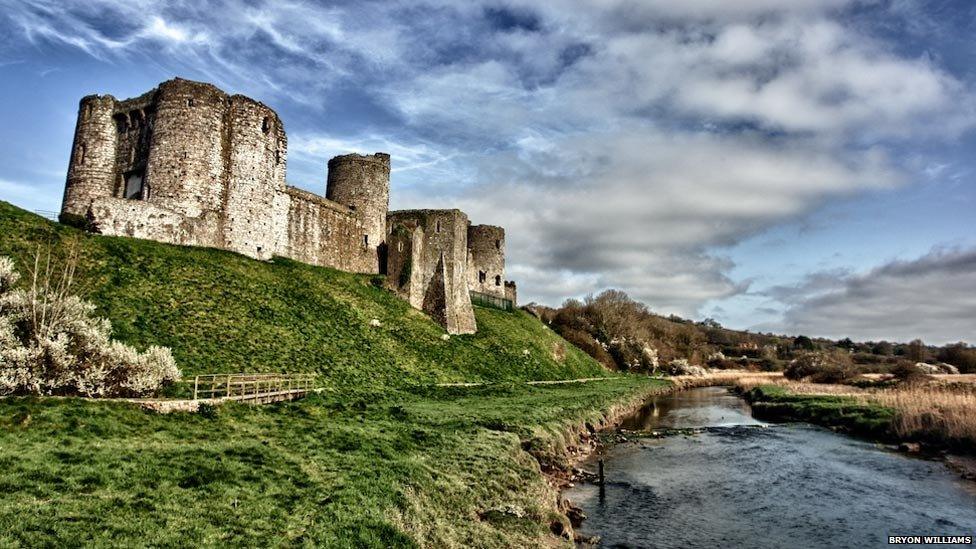
Kidwelly Castle in Carmarthenshire is an Anglo-Norman castle. Its gatehouse still has murder holes which were used by defenders to throw or pour rocks, scalding water, hot sand and boiling oil onto attackers.
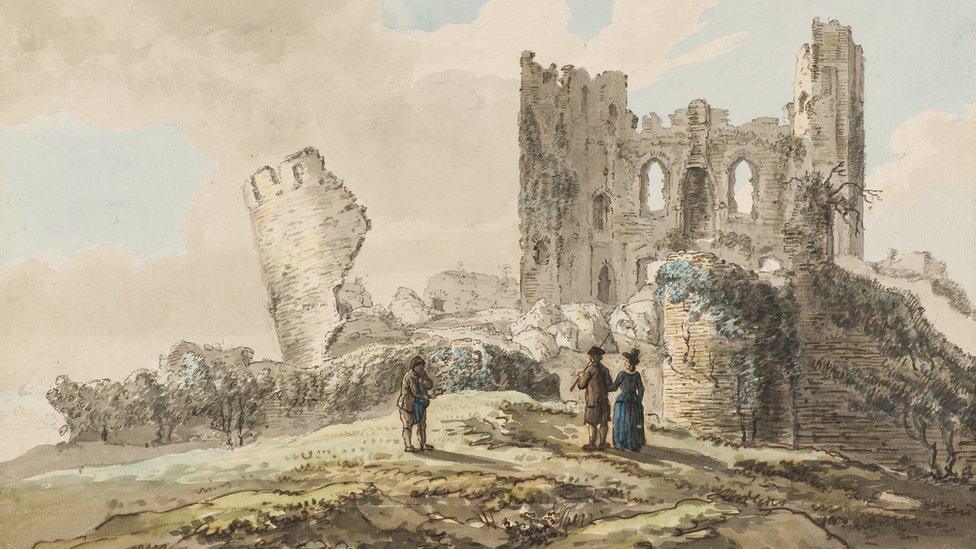
Some of the paintings in the exhibition are on show for the first time. This watercolour of Caerphilly Castle is by John Inigo Richards.
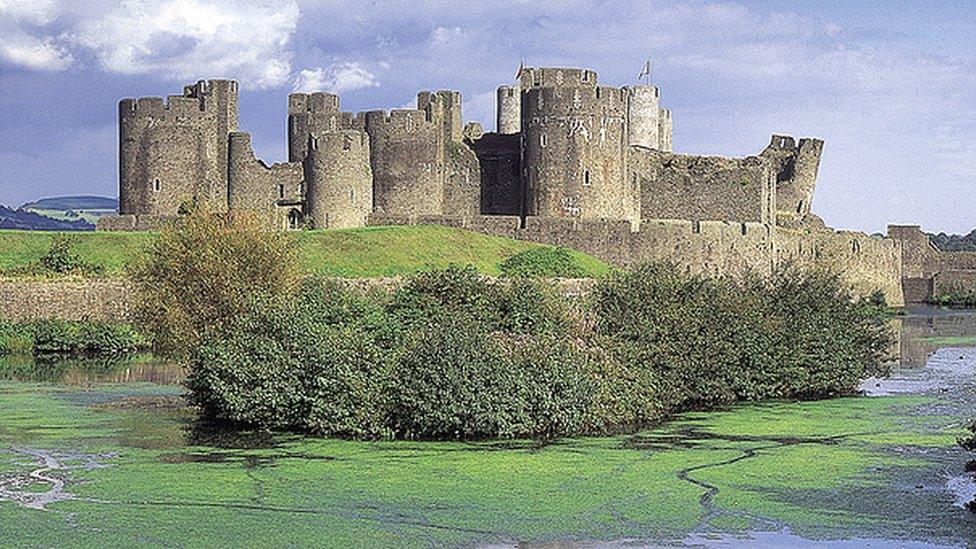
Caerphilly Castle was built by the nobleman Gilbert "The Red" de Clare, Lord of Glamorgan, between 1268 and 1271. He wanted to defend himself against Llywelyn ap Gruffydd (Llywelyn The Last), the last prince of a united Wales before the conquest of Edward I.
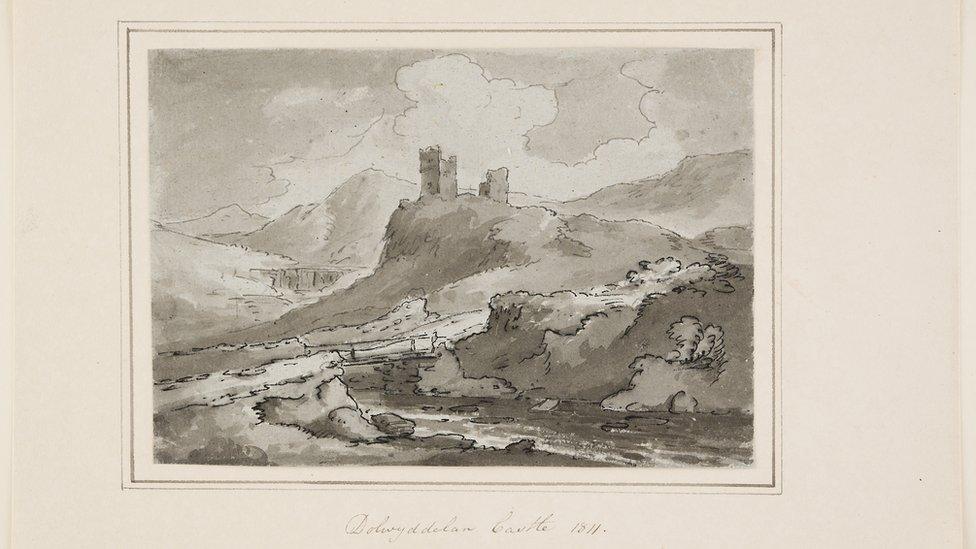
Dolwyddelan Castle by WG Jennings is one of the drawings on show at the exhibition, which will run at the museum in Cardiff's civic centre until 29 September.
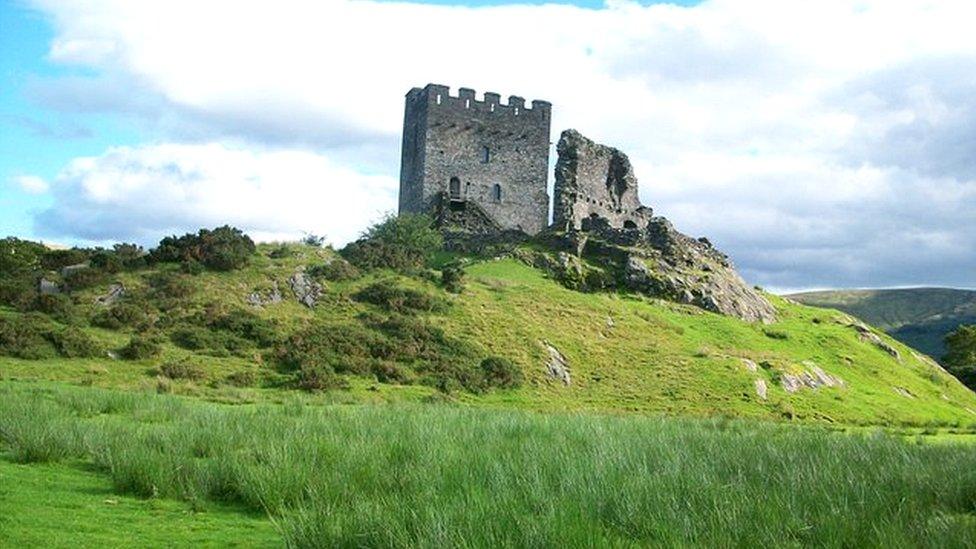
Dolwyddelan Castle was built in the early 13th century as one of the strongholds of the princes of Gwynedd. In 1283 it was captured by Edward I of England's forces during the final stages of his conquest of Wales.